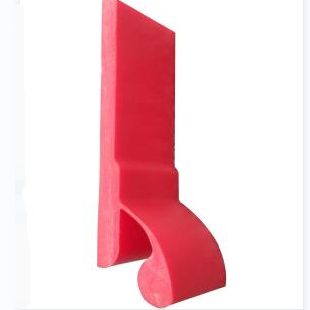
Dual Seal Rubber PU Skirt

Dual Seal Rubber Skirt

Dual Seal PU Skirt

Single Layer PU Skirt
Table Of Contents For This Page
It is not easy to introduce all aspects of conveyor skirts, so we have prepared a lot of information on this page for you to delve into. To make sure you can find the information you want quickly, we have prepared this content directory that will jump to the corresponding location when you click on it.
Conveyor Skirt technical data
Conveyor Skirt Applications
Conveyor skirts are critical components in conveyor belt systems, used in various industries for material handling. These skirts serve multiple purposes:
Containment of Materials: Conveyor skirts are primarily used to contain material on the conveyor belt, ensuring that the material being transported does not spill over the edges of the belt. This is particularly important for fine, powdery materials or granular materials like sand, gravel, or coal.
Dust Control: By keeping the materials contained, skirts also help in reducing the amount of dust that might be generated during the transport of dry, particulate materials. This is crucial for maintaining a clean and safe working environment, especially in industries where dust can be a health hazard or a combustion risk.
Reducing Material Loss: By preventing spillage, conveyor skirts directly contribute to reducing material loss. This is not only economically beneficial but also environmentally friendly, as it minimizes the wastage of resources.
Improving Efficiency: Properly installed and maintained conveyor skirts help in the smooth and efficient operation of the conveyor system. They ensure that materials are transported to their intended destination without interruptions caused by spillage or blockages.
Extending Equipment Lifespan: Spillage can lead to material build-up under the conveyor, causing additional wear and tear on the conveyor components. By preventing spillage, skirts help in extending the life of the conveyor system.
Versatility and Customization: Conveyor skirts come in various materials and designs, tailored to suit different types of materials being transported and the specific requirements of different industries. For example, harder wearing materials might be used for abrasive substances, while softer, more flexible materials might be chosen for more delicate goods.
Compliance with Safety and Environmental Regulations: By controlling spillage and dust, conveyor skirts help industries comply with environmental and workplace safety regulations.
Overall, the application of conveyor skirts is an essential aspect of managing material handling systems effectively, safely, and economically. They play a key role in the operational efficiency of conveyor belts and contribute significantly to workplace safety and environmental protection.
Conveyor Skirt classification
Conveyor skirts are classified based on various criteria such as the material they are made of, their design, and their specific application. Here’s an overview of the common classifications:
Material-Based Classification:
- Rubber Skirts: Widely used due to their flexibility and durability. Suitable for handling a wide range of materials.
- Polyurethane Skirts: Known for their excellent wear resistance and longer life. Ideal for abrasive materials.
- Plastic Skirts: Used for lighter, non-abrasive materials. They are cost-effective and have good resistance to chemicals.
- Metal Skirts: Often used in heavy-duty applications where high durability is required. They are suitable for very abrasive materials but are less forgiving than rubber or polyurethane.
Design-Based Classification:
- Flat Skirts: Simple, flat panels that run along the sides of the conveyor. Suitable for general applications.
- Angled Skirts: Designed to create a tighter seal by being angled against the belt. Effective in reducing spillage and dust.
- Sealing Skirts: Incorporate additional sealing elements to provide an even tighter seal. Ideal for fine or highly fluid materials.
- Adjustable Skirts: These can be adjusted to maintain the right distance from the belt, ensuring effectiveness over time as the skirt wears.
Application-Based Classification:
- Primary Conveyor Skirts: Located at the loading zone of the conveyor to control initial material spillage and dust.
- Secondary Conveyor Skirts: Positioned further along the belt to continue containment of materials and control any residual spillage.
Customized Solutions:
- Many manufacturers offer custom-designed skirts to meet specific industrial needs. These can be tailored to unique conveyor designs, material types, and environmental conditions.
Each type of conveyor skirt has its own advantages and is chosen based on factors like the type of material being conveyed, the environment in which the conveyor operates, and the specific needs of the application, such as the degree of containment required and the level of wear resistance needed. The selection of the right conveyor skirt is crucial for ensuring the efficiency, safety, and cost-effectiveness of the conveyor system.

